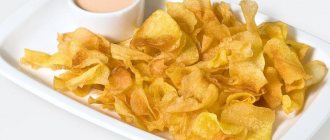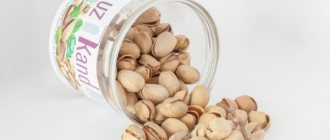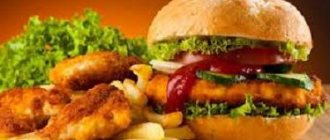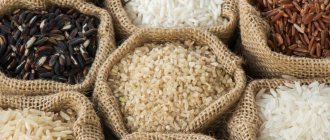Japanese cuisine has gained unprecedented popularity in just a few years. Sushi and rolls have become one of the favorite delicacies for all segments of the population. However, adherents of healthy eating are always worried about the same question - how high in calories this food is. How many calories are in sushi, and is it possible to eat this dish while losing weight?
The rich selection of dishes in Japanese restaurants always makes you think. On the one hand, all the sets look appetizing, and at first you can try any of them to understand what the food is like. On the other hand, the calorie content of sushi is completely different; the menu contains both vegetarian dishes and mixes with seafood and meat.
What are the advantages of Japanese cuisine
- The Japanese philosophy involves maximum trust in nature and immersion in it. Therefore, sushi is usually created based on natural products.
- A harmonious combination of ingredients is an important aspect of the exoticism and sophistication of a dish.
- Seasonings allow you to experience the unusual taste and enjoy the peculiarities of Japanese dishes.
- The original design attracts attention, Japanese food looks very aesthetically pleasing and arouses interest and a desire to try amazing dishes.
The energy value of sushi is so low that you can spend a fasting day on this dish.
The benefits and harms of the dish
Positive and negative properties are formed based on the composition of the dish.
Ingredient Beneficial properties Harm and possible contraindications Nori dietary fiber helps improve the functioning of the digestive system, cleanses the intestines; have an antibacterial and anti-inflammatory effect; indicated for use by patients suffering from thyroid disease, atherosclerosis, varicose veins; rich in vitamins A, C and group B. Excessive consumption of nori in food can lead to an excess of iodine. White rice (sticky) complex carbohydrates, present in large quantities (21 g per 100 g of cooked rice), fill the body with a long-term influx of energy; absorbs harmful substances, removes toxins and wastes, excess water from the body; helps normalize sleep, improve brain activity, maintain healthy bones and teeth; reduces pain in diseases of the gastrointestinal tract (including ulcers, gastritis); has a positive effect on the condition of the skin, nails, and hair. Failure to comply with the norm can lead to: constipation; gaining excess weight; development of diabetes mellitus; cardiovascular diseases. Lightly salted salmon High content of Omega-3 and -6 fatty acids (4.1 g and 0.9 g per 100 g) has the following positive effects: the functioning of the cardiovascular system improves (including “bad” cholesterol decreases, blood pressure returns to normal, the walls of blood vessels are strengthened); acting in conjunction with vitamin D, Omega fatty acids relieve dry eye syndrome; increase brain activity; serve as prevention of Parkinson's and Alzheimer's diseases; reduce nervous tension, reduce the production of stress hormone (cortisol)
Collagen in the composition increases the elasticity of the skin. You should be careful when consuming raw fish, as there is a risk of becoming infected with parasites; People who are overweight or have chronic diseases should consult their doctor before including lightly salted salmon in their menu. Philadelphia cheese potassium (278 mg/100 g) supports cardiovascular health; calcium (351 mg) and phosphorus (523 mg) strengthen teeth, bones, nails; has a beneficial effect on brain activity
100 g of product contains 12 g of cholesterol; people with high cholesterol should limit the amount of Philadelphia cheese; cheese is contraindicated in the presence of diseases of the urinary system and hypercalcemia (excess calcium in the blood plasma); should be used with caution in case of obesity and atherosclerosis. Avocado As a result of the research, the following beneficial properties of avocado were identified: regular consumption reduces the risk of developing cancer (including breast cancer); prevents heart attack; increases stress resistance. Due to its high calorie content, the product should be used with caution by overweight people. Cucumber fiber cleanses the intestines; helps normalize cholesterol levels; with regular use, metabolism improves; potassium is responsible for healthy kidney function; helps cope with swelling and remove excess fluid from the body. Abuse of the product can lead to digestive system disorders and edema.
Including Philadelphia rolls in the menu in moderation and subject to certain preparation rules can be beneficial to the body. People with diseases of the gallbladder, gastrointestinal tract, or stomach ulcers (especially during exacerbations) should avoid eating rolls. Overeating can cause constipation or allergies to certain ingredients.
What products are Japanese dishes made from?
The main ingredient of rolls is rice. Properly prepared, it allows the body to quickly get enough. It contains carbohydrates and fiber - microelements vital for every person.
Fresh, smoked and salted fish, which is also one of the components of a complete Japanese dish, gives sushi a special taste. The freshness of the entire dish depends on the quality of the fish. Professional chefs - specialists in making sushi - know how to combine ingredients in such a way as to achieve the highest taste harmony. Rolls with salmon, tuna and eel are quite popular in Japanese restaurants; they are very nutritious, but low in calories.
Seafood, which is also indispensable during the cooking process, must be fresh and added to the rice in a certain quantity.
Vegetables, seaweed and seasonings play a special role in making sushi. Some of these ingredients add piquancy to the dish, while others are added to enhance or subdue the unusual flavor of the fish or seafood. The most popular vegetarian dish is rolls with avocado and cucumber.
Calorie table per 100 grams + BJU
The table below shows the calorie content of the main types of rolls and sushi. It should be understood that these figures are approximate, and the calorie content of the roll and sushi in each case depends on the amount of rice and filling, as well as on the cooking method.
Serving of 5-8 pcs.
On average, the weight of one sushi is 15–25 grams, a roll – 20–50 grams. Most often, a serving in a restaurant consists of 5-8 pieces.
From here it is easy to calculate that one serving of sushi contains approximately 120 grams, which equals 170 kcal, and one serving of rolls contains approximately 250 grams, which equals 355 kcal.
What is the benefit
- First of all, it is worth noting that this is a low-calorie food, which may well serve as the basis for a diet.
- The calorie content of Japanese cuisine varies, however, it does not exceed the calorie content of flour products and desserts. That is why restaurants with a similar assortment are more often visited by lovers of healthy food than coffee shops and eateries that offer fast food.
- Rice, seafood and vegetables contain large amounts of microelements that the human body lacks. By eating freshly prepared sushi, you can compensate for the deficiency of fiber, carbohydrates, phosphorus, vitamins and other substances.
Rolls are great for split meals. The volume of one serving is quite small, but they are satisfying and allow you to quickly satisfy your hunger.
Does the sushi diet make sense?
Nutritionists say that the use of rolls as a staple food can only be justified if the dosage is correct . One serving (about 6 pieces) contains approximately 250-350 kilocalories (depending on the type of filling), and a person should eat about 2-2.5 thousand kcal per day. Therefore, rolls can be eaten in small portions every day. You also need to remember that rice, fish and seaweed contain various vitamins and beneficial microelements that make rolls an even more healthy product.
Sushi diet
Going on a diet and at the same time eating well without consuming extra calories is a great option. Since the roll is a very filling product, and the portions are small in volume, you can distribute meals throughout the day so that the body receives enough nutrition and at the same time consumes a minimum of calories. For example, Philadelphia allows you to get enough satiety with a low calorie content of the product. Vegetarian rolls with vegetables, seaweed and mushrooms are also perfect for your diet.
What is the sushi diet? First of all, this is fractional nutrition. Taking into account calories, you should create a menu for the day so that each meal includes sushi or rolls. In total, the entire daily diet should not exceed 1000 kilocalories.
Recommendations
Most classic Japanese dishes are high in calories. Some of them can be left in the diet and still avoid weight gain.
Some nuances will help with this:
- Hot, baked and sweet rolls will have the highest energy value. They will also be the fattest. Therefore, if possible, these species should be excluded from the diet.
- Sushi will have the lowest dietary value; it is served in small portions to prevent overeating.
- Wasabi and soy sauce are traditional high-calorie additives. It is necessary to choose food that does not contain, or at least a minimal amount of, various high-calorie sauces or soft cheese.
- You should not combine the consumption of sushi and rolls with soda or alcohol. Alcoholic drinks do not allow the body to control appetite, increasing the risk of overeating.
- 15–20 minutes after eating sushi, you should drink warm green tea. It will help food be better absorbed and prevent the accumulation of excess weight in the body.
Contraindications for use
- Don't get carried away with Japanese cuisine. It is quite unique, so one day a week is enough when you include one or two rolls in your diet, such as Philadelphia, California, Alaska or sushi, the basis of which is seaweed and vegetables, for example, a roll with cucumber.
- You should be very careful with raw fish. If you decide to prepare the dish yourself at home, make sure that all ingredients are fresh.
- Sushi has a very short shelf life, so when ordering it at a restaurant, check how long ago the dish was prepared. When making them at home, it is better not to put them in the refrigerator, but to eat them freshly prepared.
Main types of rolls
Calorie content directly depends on the components that are included in their composition:
- The main component is boiled rice, the calorie content of which is about 100 kcal per 100 g of finished product (however, remember that one roll contains less than 100 g of rice).
- The rolls also contain fish, meat or vegetables, which add additional calories.
- Also includes nori seaweed. Although these algae are quite high in calories (about 300 kcal per 100 g of product), there are only a few of them, so they do not make the rolls too high in calories.
Calorie table of the most popular rolls
| Name | Number of kcal. (in 100 g) |
| California | 176 |
| Philadelphia | 142 |
| Alaska | 90 |
| Unagi maki | 173 |
| Tempura | 165 |
| Kyoto | 155 |
| The Dragon | 189 |
| Philo | 90 |
| Tory Koonsay | 110 |
| Caesar | 113 |
| Vegetables | 70 |
Philadelphia and California rolls are the most popular in Japanese restaurant chains. Firstly, a set of 6-8 pieces is an excellent meal replacement. Secondly, these are the two most delicious and beloved types of sushi. Philadelphia contains rice, salmon, cucumber, avocado, Philadelphia cream cheese, and seaweed. The calorie content of such rolls is inferior to any spring roll or hamburger.
California roll is made from rice, tobiko flying fish roe, crab meat, seaweed and cream cheese. Cucumber and avocado are added. As you can see, these two options are similar in composition, but their taste is completely different.
The calorie content of Philadelphia and California rolls allows you to enjoy the taste of an exotic dish without gaining weight.
Compound
Cafes, bars and restaurants are required to indicate the ratio of BJU and calorie content of sushi and rolls in the menu. Moreover, both in printed form, which is served to visitors, and in an online version on the official website. This need is due to the fact that the composition of the same dish in different establishments can differ significantly. Accordingly, nutritional value will vary.
Unfortunately, not all establishments adhere to this rule. Sometimes even the staff cannot say exactly what the calorie content of a particular roll on their menu is. If you find yourself hostage to such a situation, it is enough to look at the composition of the dishes and, at least by eye, determine which of them are dietary and which can cause weight gain.
Low-calorie foods may contain:
- apple;
- seaweed "Chuka";
- “Masago” caviar orange, black;
- flying fish caviar, red, green;
- squid, shrimp, crab meat (natural), snow crab (imitation), mussels, octopus, scallop, uni;
- Chinese cabbage, Iceberg lettuce, cucumber, tomato, bell pepper and jalapeno, daikon;
- sesame seeds, dill, pickled ginger, asparagus;
- mamenori (soy paper), nori (pressed paper-like sheets of red seaweed);
- shiitake (mushrooms).
Much higher in calories are ingredients such as:
- avocado;
- bacon, smoked chicken;
- salmon, yellowtail, eel, tuna, mackerel, snapper;
- sauces “For baking”, “Spice”, “Unagi”, “Tempura”, “Barbecue”, “Mustard-honey”, mayonnaise;
- cream cheese, parmesan, mozzarella;
- tomago (Japanese omelette).
The main ingredient is rice. It will be useful to find out in advance from the establishment which one they use to prepare their dishes. The ideal option is brown. But this is rare, so most often you have to be content with ordinary white.
When cooking at home, do not forget to calculate what the final calorie content of the dish will be, taking into account the ingredients involved.
Calorie content of baked rolls
Anyone who is not delighted with raw fish in popular sushi and rolls will be happy if you serve baked rolls. This is an ideal compromise for fans of Japanese cuisine and opponents of eating uncooked seafood.
Quick-to-prepare baked rolls, the calorie content of which does not exceed 187 kcal per serving, will be a gift for amateur cooks who monitor their physical fitness.
- Recipe published by: Alexandre Lozier
- After cooking you will receive: 6-8 servings
- Preparation: 5 minutes
- Cooking: 25 minutes
- Preparation: 30 minutes
- Calorie content: 187 kcal per 100 g
- 60 ml rice vinegar
- 0.4 kg sushi rice
- 100 g nori sheets
- 80 g fresh cucumber
- 0.25 kg lightly salted fish
- 120 g capelin caviar
- 150 g curd cheese
- ½ cup soy sauce
1. Undercook the rice slightly. 5 minutes is enough. Drain the water. Moisten with rice vinegar and stir. Let cool.
2. Rinse the cucumber under running water. Remove the skin. Cut into strips. Grind the fish into long bars. Drain the brine.
3. Wrap a bamboo mat in cling film. Place sheets of nori on it. Spread the boiled rice into a thin layer. Place pieces of soft cheese. Place cucumber strips and fish slices on the edge. Wrap the roll using a mat. Carefully glue the edges together by rolling the bamboo mat several times.
5. Prepare a dressing from soy sauce, capelin caviar and curd cheese. Mix all ingredients. Gently spoon onto each piece of roll. Bake in a preheated oven until the cheese is browned.
Now you know all the secrets of how to cook baked rolls deliciously, quickly and while preserving all the healthy components of the dish. It’s worth trying another variation on the theme of Japanese cuisine – fried rolls.
Set new culinary records!
The rich selection of dishes in Japanese restaurants always makes you think. On the one hand, all the sets look appetizing, and at first you can try any of them to understand what the food is like. On the other hand, the calorie content of sushi is completely different; the menu contains both vegetarian dishes and mixes with seafood and meat.
- The Japanese philosophy involves maximum trust in nature and immersion in it. Therefore, sushi is usually created based on natural products.
- A harmonious combination of ingredients is an important aspect of the exoticism and sophistication of a dish.
- Seasonings allow you to experience the unusual taste and enjoy the peculiarities of Japanese dishes.
- The original design attracts attention, Japanese food looks very aesthetically pleasing and arouses interest and a desire to try amazing dishes.
The main ingredient of rolls is rice. Properly prepared, it allows the body to quickly get enough. It contains carbohydrates and fiber - microelements vital for every person.
Fresh, smoked and salted fish, which is also one of the components of a complete Japanese dish, gives sushi a special taste. The freshness of the entire dish depends on the quality of the fish. Professional chefs - specialists in making sushi - know how to combine ingredients in such a way as to achieve the highest taste harmony. Rolls with salmon, tuna and eel are quite popular in Japanese restaurants; they are very nutritious, but low in calories.
Vegetables, seaweed and seasonings play a special role in making sushi. Some of these ingredients add piquancy to the dish, while others are added to enhance or subdue the unusual flavor of the fish or seafood. The most popular vegetarian dish is rolls with avocado and cucumber.
- First of all, it is worth noting that this is a low-calorie food, which may well serve as the basis for a diet.
- The calorie content of Japanese cuisine varies, however, it does not exceed the calorie content of flour products and desserts. That is why restaurants with a similar assortment are more often visited by lovers of healthy food than coffee shops and eateries that offer fast food.
- Rice, seafood and vegetables contain large amounts of microelements that the human body lacks. By eating freshly prepared sushi, you can compensate for the deficiency of fiber, carbohydrates, phosphorus, vitamins and other substances.
Sushi diet
Going on a diet and at the same time eating well without consuming extra calories is a great option. Since the roll is a very filling product, and the portions are small in volume, you can distribute meals throughout the day so that the body receives enough nutrition and at the same time consumes a minimum of calories. For example, Philadelphia allows you to get enough satiety with a low calorie content of the product. Vegetarian rolls with vegetables, seaweed and mushrooms are also perfect for your diet.
- Don't get carried away with Japanese cuisine. It is quite unique, so one day a week is enough when you include one or two rolls in your diet, such as Philadelphia, California, Alaska or sushi, the basis of which is seaweed and vegetables, for example, a roll with cucumber.
- You should be very careful with raw fish. If you decide to prepare the dish yourself at home, make sure that all ingredients are fresh.
- Sushi has a very short shelf life, so when ordering it at a restaurant, check how long ago the dish was prepared. When making them at home, it is better not to put them in the refrigerator, but to eat them freshly prepared.
Philadelphia and California rolls are the most popular in Japanese restaurant chains. Firstly, a set of 6-8 pieces is an excellent meal replacement. Secondly, these are the two most delicious and beloved types of sushi. Philadelphia contains rice, salmon, cucumber, avocado, Philadelphia cream cheese, and seaweed. The calorie content of such rolls is inferior to any spring roll or hamburger.
California roll is made from rice, tobiko flying fish roe, crab meat, seaweed and cream cheese. Cucumber and avocado are added. As you can see, these two options are similar in composition, but their taste is completely different.
The calorie content of sushi is indeed quite suitable for dieting. However, before you start losing weight using Japanese cuisine, you should consult a nutritionist to get a successful result.
You can find out the calorie content of rolls using the calorie table or make individual calculations based on the energy value of all ingredients.
Sushi has a spicy taste and healthy properties. Eel, boiled rice, crabs, sauces make the food heavy on the stomach, but there are light varieties of Asian treats.
Sushi has a spicy taste and healthy properties.
For a healthy diet, vegetable rolls with cucumber, avocado, and chakki seaweed are suitable, but the portions in this case should be moderate.
You can eat up to 20 pieces per day, half of which are for breakfast.
What determines the calorie content of rolls?
During the diet, you can add light filling to the dish: vegetables, lean river fish, crab meat or boiled shrimp. The calorie content of rolls with cheese is higher, so they can only be eaten in the morning. Crispy rolls are strictly prohibited during diets, as they are fried with a lot of oil.
It is not recommended to eat rolls with cheese and salmon; the energy value of 1 such roll can exceed 200 kcal.
The best food option for weight loss is preparing a Japanese dish with the addition of rice and vegetables. You should not overuse soy sauce and pickled ginger.
As part of a balanced and dietary diet
Japanese cuisine is famous for carefully selected ingredients that have a positive effect on human health. Fish is a source of easily digestible protein, phosphorus, and calcium. It is necessary for the normal development of all body systems. Rice is useful for its fiber, which removes toxins and harmful substances from the body, and normalizes cholesterol levels in the blood. Sushi without all kinds of high-calorie additives is a dietary food that can be fully used for the purpose of losing weight. Just a few pieces of sushi can satisfy hunger for a long time and saturate the human body with all the substances it needs.
Noria seaweed itself is also useful. They are rich in minerals, vegetable protein and vitamins. They are valuable for the human body because they are able to lower cholesterol levels in the blood and reduce the risk of developing atherosclerosis and cancer.
How much sushi you can eat depends on the person’s health status. If you are prone to constipation, you should limit your consumption of this dish. It is important to remember that raw fish, which is used in traditional Japanese sushi, can harbor pathogens. To avoid infection, it is recommended to eat such sushi with wasabi and ginger, or purchase (cook) rolls with marinated or salted fish.
Rolls are a tasty and quite healthy food that is valued for its low calorie content. However, not all Japanese cuisine is suitable for dietary nutrition. It is important to carefully read the composition of this dish and correctly adjust it in the process of preparing it yourself.
The benefits of rolls, use in diets
Japanese rolls are rice with filling, wrapped in seaweed. Before serving, the roll is cut into several pieces. There are many varieties of the dish, it all depends on the filling and method of preparation.
Thanks to the addition of fish, the body is saturated with microelements and fatty acids. Seaweed contains proteins, vitamins and iron, and rice is very nutritious - you don’t feel painful hunger during the diet.
For dietary nutrition, you need to use only low-calorie ones: rolls with lean fish or vegetarian ones with vegetables, for example, the nutritional value of this product with cucumber is 90 kcal. Check out our publication for the mushroom calorie table.
When choosing ingredients for a Japanese dish, pay attention to the calorie content. This tasty and nutritious product will help you lose weight and keep it off after a diet.
Contraindications, possible harm
Sushi and rolls are very healthy dishes, but there are some contraindications:
- People prone to allergic reactions to seafood.
- Patients with gastritis and diseases of the gastrointestinal tract.
- For diabetes mellitus.
- Acute diseases of the cardiovascular system.
If you experience heartburn or abdominal pain after consumption, you should consult a general practitioner or gastroenterologist. If the ban on eating sushi is confirmed, they should be excluded from the diet.
- Bju rolls calorie content
- Fresh green peas: calorie content per 100 grams - 55 Kcal. Proteins, fats, carbohydrates, chemical composition.
- Online calorie calculator – calorie counter.
- Pomelo fruit calorie content per 100 grams










